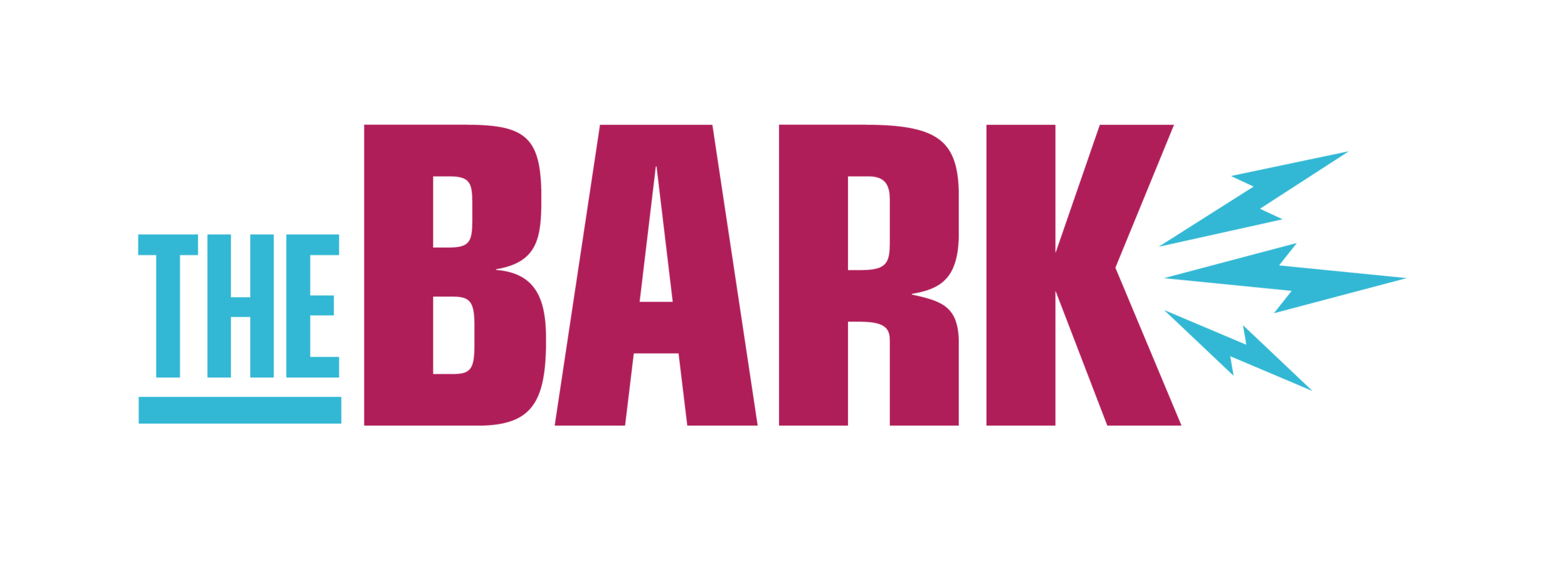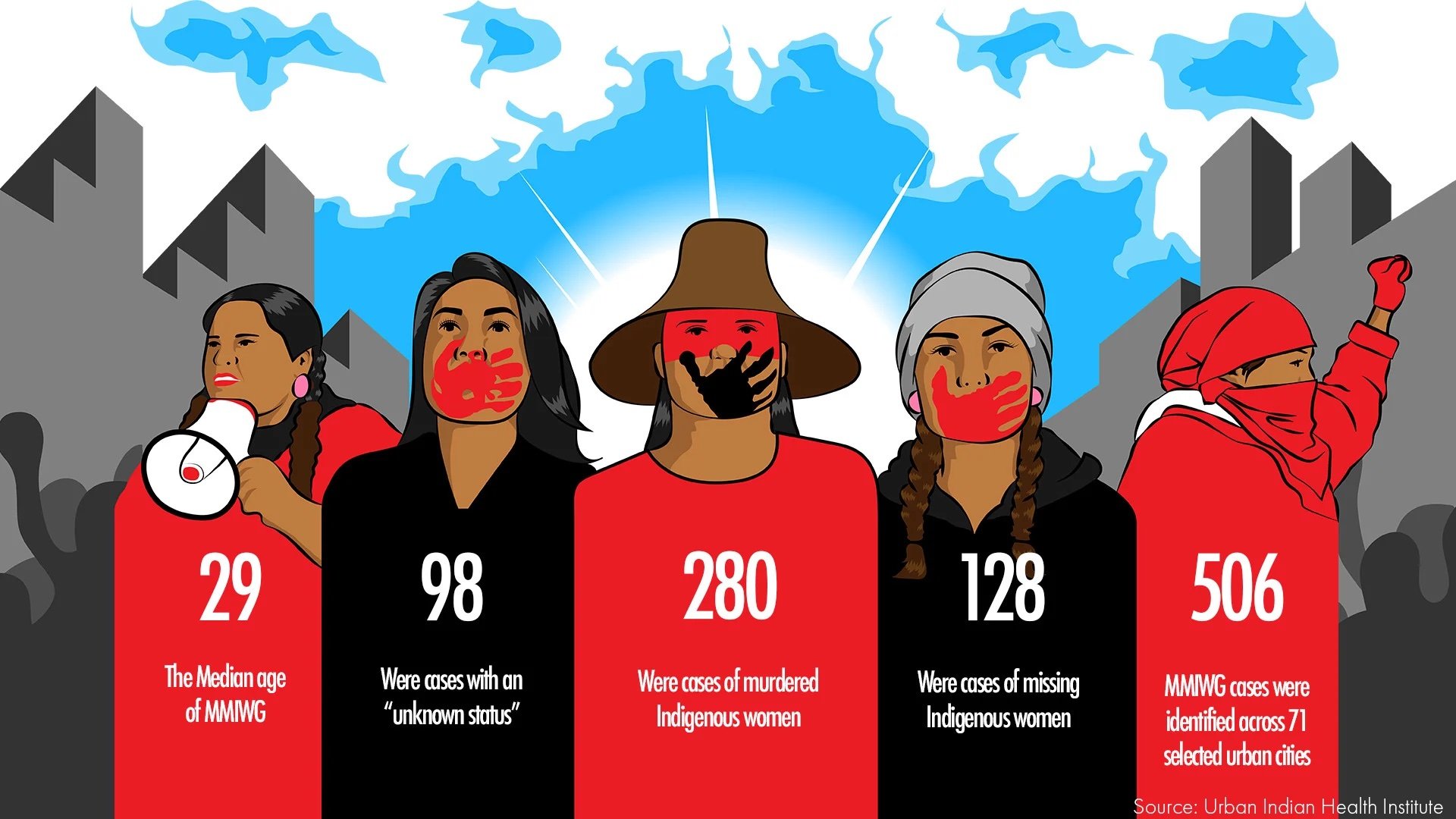Missing and Murdered: Understanding why Indigenous women are murdered and go missing at higher rates than other populations
There is a nationwide crisis of missing and murdered Indigenous women and girls. Indigenous women are more likely to go missing or be murdered than any other ethnicity. Because the population of Indigenous people is small (making up 2% of the population), it is not reported on a lot. However, more than four out of five American Indian and Alaska Native women have experienced violence in their life.
According to a report by Urban Indian Health Institute (UIHI), in 2016, there were 5,712 reports of missing American Indian and Alaska Native women and girls, whereas the US Department of Justice’s federal missing persons database, NamUs, only logged 116. The Center for Disease Control and Prevention reported that murder is the third-leading cause of death for American Indian and Alaska Native women and girls.
The report identified 506 cases of missing and murdered Indigenous women and girls, across 71 selected cities. 128 (25%) of them were missing persons cases, 280 (56%) were murder cases and 98 (16%) had an unknown status. 66 of the 506 cases were tied to sexual assault.
The Urban Indian Health Institute is helping lead the way in research and data for urban American Indians and Alaska Natives. Graphic provided by Native Hope.
So why is this such a drastic crisis? Dr. Jill Doerfler, professor and department head for University of Minnesota-Duluth’s (UMD) American Indian Studies department, explained the complexity of these cases of missing and murdered Indigenous women.
“There are really complex jurisdictional issues when it comes to these cases,” Doerfler said, “it depends on where the crime occurred, on reservation or off, and then it's a matter of if the victim and/or the perpetrator is Native American or not, depends on who's going to have jurisdiction, different tribal nation,” Doerfler said.
About 2.8 million American Indians and Alaska Natives live in or near urban areas today. This makes jurisdiction complicated for the Indigenous women and girls who go missing. If they live off their reservations, it is typically state jurisdiction, and their tribe can’t be involved.
“When crimes are committed on a reservation, it is typically federal jurisdiction,” Doerfler said, “these cases of murdered and missing Indigenous women also, very often connect back to rape and sexual assault and they decline to prosecute in many cases”
For example, between 2005 and 2009, US attorney's declined to prosecute 67% of the Indian Country matters referred to them that involved sexual abuse and sexual assault.
The U.S Department of Justice found that American Indian women face murder rates that are more than 10 times the national average. Photo by Howl Art Collective via Flickr.
As a result, people are reluctant to report crimes like these. There is a major distrust between law enforcement and Indigenous communities, and a lot of victims don’t want to relive their trauma when reporting and have no justice come from it.
In many cases, negative stereotypes play a role in the lack of prosecution and investigation into these matters. The victims are often blamed, for a variety of reasons like alcohol/drug use or homelessness. In addition, the hyper-sexualization and dehumanization of Indigenous women plays a role in the disproportionate rate of missing and murdered Indigenous women .
“In American society, in general, there is a hyper sexualization of women,” Doerfler said, “In addition, many Americans think of being American Indian not as a real identity for people, but as something that is a fun thing to pretend about, it has real consequences. I think that the men who commit these horrible crimes are able to do so because they don’t see their victim as a real person. .”
Because of negative stereotypes, when Indigenous women go missing, the search for them is often hindered. Many times, law enforcement doesn’t take reports seriously, and the media rarely reports on these matters.
According to Native Hope, these stereotypes include portrayingIndigenous people to be “lazy, drug addicts, and alcoholics who rely on the government to survive.”
“Moreover, this modern stereotype was created through acts of colonization and cultural assimilation,” the online report said. “Pre-colonization, Native societies traditionally revered and honored the sacredness of women. Women held positions of authority and did a large portion of labor within their camps, but the European colonists with patriarchal views took the women as slaves to the men. Soon, Native women had been victims of rape, violence, and submission. This mistreatment can be traced throughout America’s history. Natives were viewed as ‘savages.’”
In Minnesota, Indigeous women make up 1% of the population, but 8% of all murdered women and girls are Indigeous. Legislators created a Missing and Murdered Indigenous Women’s
Task Force in Minnesota to work on this problem.
While states like Minnesota are taking steps to fix this crisis, there is still so much to be done. This is a systematic problem that has been ingrained in the society of the United States that is based on racism, sexism, and violence.
Mending the Sacred Hoop in Duluth, MN has great resources for Indigenous women experiencing violence or other problems.


